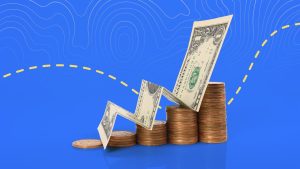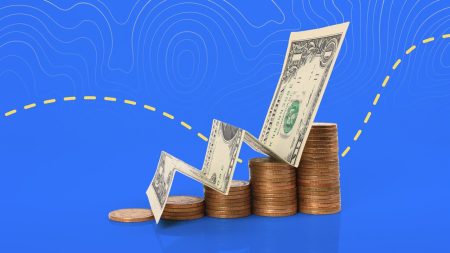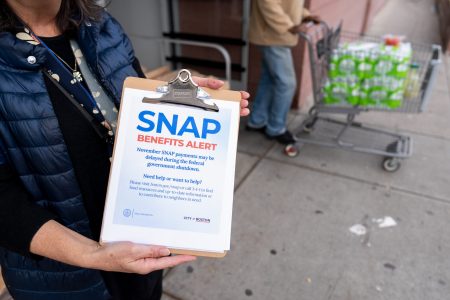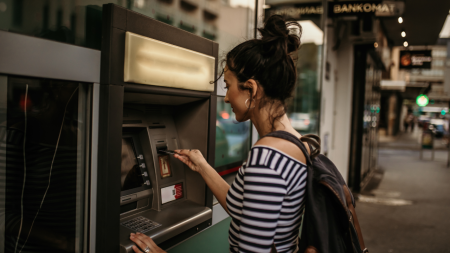The American Express Cash Magnet® Card* is no longer taking new applicants as of September 2024, although existing cardholders can still use the card. Those interested in the American Express Cash Magnet® Card can check out the Blue Cash Everyday® Card from American Express instead.
Key takeaways
- While a 2 percent cash back credit card with no annual fee is a great option for most people, there are some instances where a card with lower rewards can actually provide more value.
- Chase, Bank of America and Capital One all offer 1.5 percent cash back cards that boost rewards through limited-time offers, in specific categories or on travel.
- For a stronger rewards strategy, combine or rotate multiple cards to earn even more on your everyday spending.
While I believe almost everyone should have a no-annual-fee 2 percent cash back credit card, there are some instances in which choosing a cash back card with a seemingly lower payout can actually provide more value, at least for a time. Here’s what you need to know:
When 1.5% is better with Chase
The Chase Freedom Unlimited® has a base rewards rate of 1.5 percent cash back on all purchases, but it does even better in certain categories. Cardholders can:
- Enjoy 5% cash back on travel purchased through Chase Travel℠, our premier rewards program that lets you redeem rewards for cash back, travel, gift cards and more.
- 3% cash back on drugstore purchases and dining at restaurants, including takeout and eligible delivery service.
- 1.5% cash back on all other purchases.
If you spend a lot in those categories, that could potentially boost your overall cash back earnings over 2 percent.
With that in mind, this Chase card could be better than a flat-rate 2 percent cash back card in the following situations:
You want to earn heightened rewards on travel redemptions
If you have a Chase card that allows you to transfer Ultimate Rewards points to Chase airline and hotel partners, you can get even more value from your Freedom Unlimited card. That’s because you can combine Ultimate Rewards points earned across various cards, and when you transfer points to airlines and hotels, you might be able to get a significantly higher redemption value than the standard 1 cent per point.
Ultimate Rewards points are worth around 2.0 cents apiece on average when transferred to high-value travel partners, according to Bankrate valuations. Sometimes, you can get even more value if you find a sweet spot in an airline or hotel award chart.
You want credit card and travel protections
The Freedom Unlimited also has generous purchase protection, extended warranty coverage and trip cancellation and interruption insurance. It’s a versatile card that’s one of the most valuable no-annual-fee options on the market.
When 1.5% is better with Bank of America
Bank of America has two no-annual-fee credit cards that offer 1.5 percent cash back on every purchase. The simplest is the Bank of America® Unlimited Cash Rewards credit card, which provides exactly that: unlimited 1.5 percent cash back.
There’s also the Bank of America® Travel Rewards credit card. While technically not a cash back card (you earn 1.5X points per dollar on all eligible purchases), you can redeem those points for statement credits to offset eligible travel or dining purchases.
The Bank of America® Premium Rewards® credit card is another card that is technically not a cash back card. This card earns 1.5X points on most purchases while also earning a boosted 2X points on travel and dining purchases — although this card does charge an annual fee of $95.
These cards could provide more value than a 2 percent cash back card if:
You’re interested in maximizing rewards through Preferred Rewards
For all three cards, your 1.5 percent rewards rate could grow to as much as 2.62 percent (2.62X points) if you have at least $100,000 in deposits or investments in an eligible account with Bank of America or Merrill.
Bank of America’s Preferred Rewards program boosts your credit card rewards by:
- 75 percent if you have $100,000 or more in eligible deposits or investments at the two highest tiers
- 50 percent if you have between $50,000 and $99,999 in eligible deposits or investments at the Platinum tier
- 25 percent if you have between $20,000 and $49,999 at the Gold tier
If you’re a loyal customer, you could earn 2.62 percent, 2.25 percent or 1.87 percent, respectively, in cash back or statement credits.
When 1.5% is better with Capital One
The Capital One Quicksilver Cash Rewards Credit Card doles out 1.5 percent cash back on most transactions. The exceptions are hotels and rental cars booked through Capital One Travel — those purchases earn 5 percent cash back. Using the Quicksilver could be better than using a flat-rate 2 percent cash back card if:
You’re a frequent traveler
If you spend a lot on hotel stays and car rentals — and you’re willing to use Capital One’s portal — this can nudge your overall return north of 2 percent. A potential drawback of any third-party booking site is that these reservations don’t typically earn hotel rewards points or count toward elite status. So you’ll have to weigh whether the extra cash back is worth it.
You go abroad often
The Quicksilver doesn’t charge foreign transaction fees, unlike many cash back cards. It doesn’t charge an annual fee, either. If you earn 2 percent cash back on a different card but pay a 3 percent foreign transaction fee, you’re actually losing money. With the Quicksilver, on the other hand, you’d earn 1.5 percent cash back without the foreign exchange fee, netting you a better overall return.
What about American Express?
American Express is not currently offering any cash back cards that pay 1.5 percent back on every purchase (or 2 percent, for that matter). The American Express Cash Magnet® Card* used to give 1.5 percent back on everything, but Amex stopped accepting sign-ups in September 2024, and it’s unclear if or when they might resume.
Instead, you might consider the Blue Cash Everyday® Card from American Express. It’s a no-annual-fee card that allows cardholders to:
- Earn 3% cash back at U.S. supermarkets, 3% cash back on U.S. online retail purchases, 3% cash back at U.S. gas stations, on eligible purchases for each category on up to $6,000 per year in purchases (then 1%).
- Earn 1% cash back on all other eligible purchases.
If you spend a lot on groceries, gas or e-commerce sites, that could push your net rewards rate over the 2 percent mark.
The bottom line
Don’t get me wrong — I still love 2 percent flat-rate cash back cards with no annual fee, which often provide solid, straightforward returns. But, as you can see, there are also some instances in which a 1.5 percent cash back card could potentially be even better.
If you want to keep it really simple, you could achieve a favorable outcome by using one of these cards for all of your spending. Or, if you’re willing to take on a bit more complexity in exchange for a higher benefit, you can combine flat-rate cards with cards that offer better rewards in certain categories.
*The information about the American Express Cash Magnet® Card has been collected independently by Bankrate.com. The card details have not been reviewed or approved by the issuer.
The Bank of America content in this post was last updated on August 11, 2025.
Have a question about credit cards? E-mail me at [email protected] and I’d be happy to help.
Why we ask for feedback Your feedback helps us improve our content and services. It takes less than a minute to complete.
Your responses are anonymous and will only be used for improving our website.
Help us improve our content
Read the full article here












